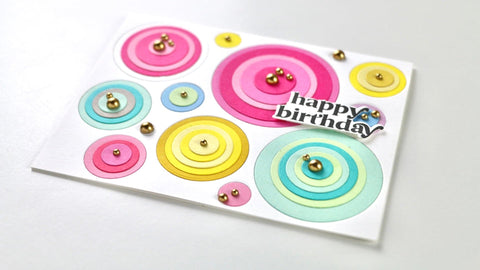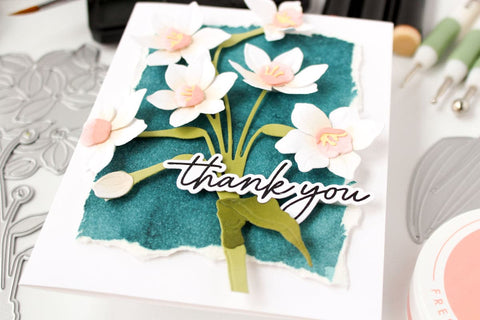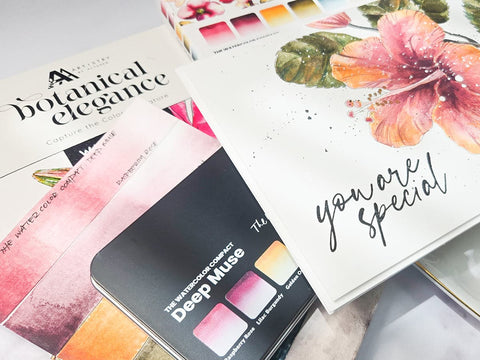What is Washi Tape and What Can it Be Used For?
Last Updated: September 25, 2025
1. What is Washi Tape?
In the most basic definition, washi tape is a decorative tape. But we can do better than that! Washi tape originated in Japan back in 2006, when crafters who had been using masking tape for their art projects, requested that a company make a line of decorative masking tapes, with all sorts of patterns and designs. The company obliged, and soon Washi Tapes were released into the world.
2. How is it made?
The word “Washi” translates essentially to mean ‘paper’. However, unlike typical paper as we know it in the West, Japanese Washi papers tend to be far more delicate and lightweight. The process of creating washi is a long and intricate process relying on manual techniques. Taking natural fibers from different local plants, but most commonly Paper Mulberry, and slowly processing them down to a pulp that is then turned into sheets of paper. These papers often are richly decorated with gold and vibrant colors and patterns, which washi tapes get their association from.
While very few manufacturers actually opt for such laborious techniques when producing washi tape, their injection into the mainstream has irreversibly impacted the way we view tapes from a purely utilitarian use to an artistic one.
3. How is it different from other tapes?
 When we think of washi tapes, it's hard not to associate them with other common tapes we might use when crafting. The most common two tapes being Scotch Tape and masking tape. But here are some key differences!
When we think of washi tapes, it's hard not to associate them with other common tapes we might use when crafting. The most common two tapes being Scotch Tape and masking tape. But here are some key differences!
3.1 Scotch Tape
Washi tape and scotch tape are pressure-sensitive adhesives and do not form chemical bonds with material surfaces. Instead, applied pressure forces the glue to penetrate the tiniest microscopic irregularities on the material’s surface. Once there, it will resist coming back out, thus keeping the tape stuck in place. But besides that, that's where the similarities end. Scotch tape is made from plastic and unlike washi tape, cannot be torn by hand. It’s translucent in nature and its use is more utilitarian than anything.
3.2 Masking Tape
Like washi tapes, most masking tapes base composition is paper, allowing you to tear them with your hands. However, unlike washi tapes, masking tapes are meant to seal out liquids such as paint. As such, they’re much thicker in nature and sometimes are reinforced with plastics and stronger adhesive.

Washi tapes are optimized for crafting purposes by having a low tack adhesive that won't damage your projects if they need to be removed or adjusted. And while most washi tapes aren’t made with traditional Japanese washi, they very much take after their spirit with deeply decorated and rich patterns.
4. What can it be used for?
There are many many many different types of washi tapes, and many different crafts with washi tapes you can create. Altenew alone has a wide variety of sizes, shapes, and designs. So if you’re new to washi tapes you may be asking yourself, how do I know which ones to use and for what? Well, we have some answers and some washi tape ideas!

When it comes to washi tapes, a very impactful factor is size. The size of your washi tape will help inform what it can be used for. With that in mind, let’s take a look at the various sizes of washi tapes available.
4.1 5mm Washi Tapes

The smallest size washi tapes Altenew has available are 5mm (or .2 inch). Tapes like our Golden Edge or Navy Gold Trim are as narrow as they come!

Tapes around this size are best suited for adding subtle accents and trim. Because of their size, they also do well for framing sentiments around your cards. One of our Design Team members, Laurie Willison, has a great example of this on our blog using our Golden Trim Washi Tape.
4.2 50mm-75mm Washi Tapes

The next notable width are washi tapes around 50mm-75mm (or 2-3 inches). These washi tapes are a little bit larger but that allows them to cover more space and affords them more room for detailed patterns.

Tapes around this size are perfect for use with the mini die-cutting machine. Rather than using just plain cardstock for die-cuts, you can cover a piece of cardstock with a 2-3 inch washi tape to use with your dies. Our Design Team member Virginia does just this using our Gilded Ombre Washi Tape over on our blog.
4.3 100mm-150mm Washi Tapes
Washi tapes around this size (4-6 inches) run just large enough to cover an entire A2 card size and are perfect for filling in the entire background of a card. Because of their size, you’ll find that these wider washi tapes are extremely versatile.

You could use something like the Gold Splatter Navy Washi Tape, to cover a whole background, or use the Painted Fantasy Washi Tape to cut out individual accents in the pattern to use independently. If you're looking for inspiration, over on our blog,
Design Team Member Therese Calvrid, shows us some great ways to utilize wider washi tapes on cards. Check out her suggestions on her special monthly feature, Take 2 With Therese!
4.4 Extra Wide Tapes
Most recently, Altenew released an extra-wide washi tape Wild Flora, which measures up to 292mm (that's nearly 12 inches!).

This tape is massive and can cover not just cards, but entire scrapbook pages, book covers, and even furniture! When tapes get up to this size the possibilities are nearly endless.
5. Why Use Washi Tape?
Why use washi tapes lies in the same question: why do we create?

There is something inherent within all of us that urges us to, in some way, shape form or medium, express ourselves. The emotions and feelings that can’t be expressed by words alone, take form in the things we create.
Washi tapes are just another tool, enabling us to better express ourselves. How you use washi tapes will ultimately reflect your own personal relationship with expression. Hopefully, provided, we can encourage and foster that expression.
In This Article
More Crafty Reads & Inspirations
-

Starting 2026 With a Clean Slate and Using Up Leftovers
-

January 2026 Inspiration Challenge
-

Simple Tips To Bring Your Die Cut Florals To Life - A Touch of Sparkle With Carissa Wiley
-

3 Secrets for No-Outline Watercoloring: The Art of the Disappearing Line | Perfect Pairings with Jaycee
-

Card Ideas that Symbolize New Beginnings
















